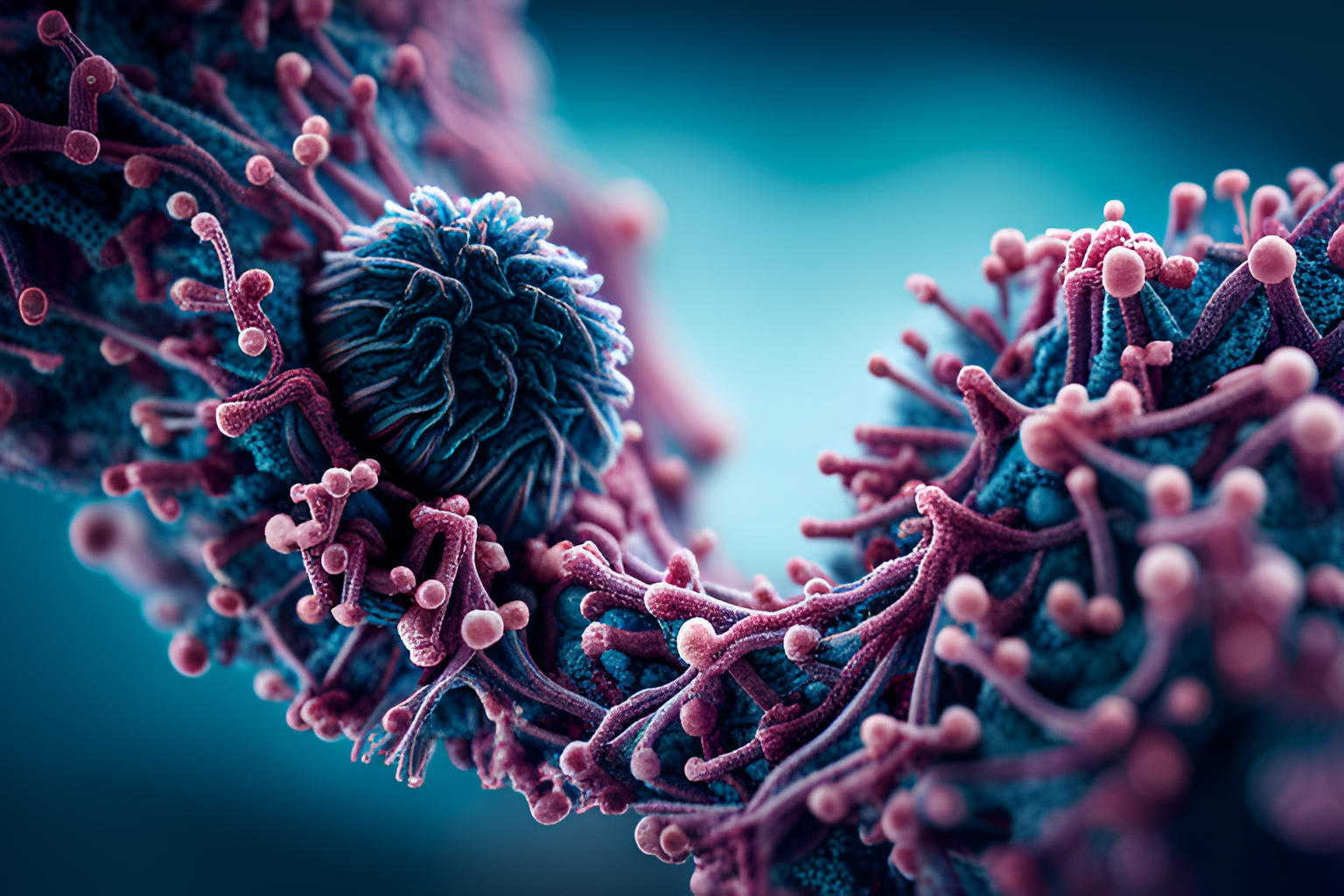HIV infection – A Devastating Disease
In the early 1980s, an enigmatic and devastating disease suddenly emerged, shattering lives and confounding medical experts. The AIDS epidemic gripped the world with fear and uncertainty as its origins and transmission mode remained elusive. This composition delves into the medical and political detective story of HIV and AIDS as it unfolded in the 1980s, tracing the virus’s early days in the United States to its rapid spread nationwide. Amidst the struggle to understand and combat the disease, civil rights clashed with public health, and funding limitations exacerbated the crisis. The story of AIDS in the 1980s reveals the intersection of medical science, politics, and human resilience in the face of a deadly pandemic.
The Early Cases and Sexual Health in the Gay Community
The AIDS epidemic was not an overnight occurrence but a culmination of events that led to its eventual identification. Reports of gay men falling mysteriously ill in New York and California in the late 1970s and early 1980s puzzled medical professionals. However, before AIDS emerged, sexually transmitted diseases were already a significant problem in the gay community due to “the rampant sexual activity in bars and bathhouses,” as it was said then. Herein we explore the epidemic’s early days and how sexual health practices played a role in its spread.

Unraveling the Mystery – The Clusters and Patient Zero
As more cases of the mysterious disease surfaced, the Centers for Disease Control (CDC) began investigating the possible connection between the various illnesses. The CDC detectives began nationwide searching for answers, leading them to conduct the “cluster study.” This study’s groundbreaking revelation was the identification of a “Patient Zero” – Gaetan Dugas, a flight attendant with an extensive sexual history. We seek to shed light on the discovery of Patient Zero and the turning point in understanding AIDS as an infectious disease.
Yes, as a side note, it is true that the term “Patient Zero” originated from a misinterpretation of British and American English. The term was first used to describe the first patient in a particular outbreak, but it was later misconstrued to refer to the person who started the outbreak. This misunderstanding led to disarray and misinformation in the early days of studying and tracking infectious diseases. (The number 0 is often “zero” in American English, while it is pronounced like the letter “O” in British English. The actual “Patient Zero” was a person whose family name began with the letter “O,” and the American doctors misinterpreted the British doctor’s patient records.)
The Battle Against the Epidemic – Public Health vs. Civil Rights
Identifying HIV as an infectious agent sparked debates and dilemmas within the gay community and the broader society. Balancing civil rights and public health became challenging as safe sex practices clashed with individual freedom. While safe sex practices gained traction within the gay community, national politics hindered comprehensive public health initiatives. This section delves into the complex intersection between civil rights and public health measures during the epidemic’s early stages.
It’s hard to believe that same-sex relationships were still considered taboo just a few decades ago in many parts of the world. While we’ve made incredible progress since then, it’s essential to recognize that the fight for LGBTQ+ rights is far from over. In the 1980s, being openly gay or lesbian was still a risky and stigmatized choice, and many people faced discrimination and even violence for being true to themselves. Despite this, brave individuals and communities continued to push for acceptance and recognition, paving the way for the more inclusive society we enjoy today. We owe them a debt of gratitude and must continue to work towards true equality and understanding for all.
Politics, Funding, and the Tragedy of Delay
In the early years of the AIDS epidemic, the Reagan administration faced a daunting challenge in addressing the growing crisis. The government’s initial response to AIDS was sluggish and marred by political considerations. Despite early warnings from public health experts about the situation’s urgency, the administration’s commitment to limit domestic spending took precedence over prioritizing AIDS research and prevention efforts.
Within the administration, the Department of Health and Human Services and the Office of Management and Budget played vital roles in approving requests for AIDS funding. Despite Congress being informed that AIDS was a top priority, the reality on the ground painted a different picture. Dr. Donald Francis, a prominent expert on epidemics and the head of AIDS laboratory research at the Centers for Disease Control, wrote a memorandum pleading for immediate funding to combat the disease effectively. His plea for $10 to $20 million was motivated by the realization that the usual government funding and spending processes needed to be faster to address the emergency.
Unfortunately, his pleas and those of other public health experts largely fell on deaf ears, and bureaucratic delays persisted. The consequence of this inadequate response was that the AIDS virus continued to spread rapidly, taking an increasingly tragic toll on the lives of those affected. During this critical time, the number of deaths from AIDS skyrocketed, and countless individuals suffered as resources for research, prevention, and treatment remained limited.
The epidemic’s disproportionate impact on the gay community further complicated the political landscape. There was a certain degree of apathy outside the gay community, lacking widespread concern about the disease’s devastating effects. Many outside observers viewed AIDS as a “gay plague,” leading to a lack of empathy and urgency in addressing the crisis.
As the death toll climbed, the public health crisis collided with civil rights concerns, further complicating the political response. The gay community rightfully demanded the protection of their civil liberties while grappling with the necessity of implementing safe sex practices. Promoting safe sex practices faced opposition, with some individuals and organizations arguing that it infringed upon personal freedoms.
Despite the challenges and delays, specific segments of the gay community took proactive steps to promote safe sex practices and reduce the transmission of the virus. Organizations like ACT UP (AIDS Coalition to Unleash Power) emerged, advocating for improved treatment and access to experimental drugs for those living with AIDS.

In Summary
The AIDS epidemic of the 1980s was a dark chapter in human history, characterized by fear, confusion, and loss. As medical experts grappled with the unknown virus, the gay community faced the challenge of changing sexual health practices without compromising civil liberties. Unfortunately, political considerations and funding limitations impeded the rapid response the epidemic required. The tragic stories of countless lives lost to AIDS underscore the importance of proactive public health measures and scientific research.
Looking back, the lessons of the 1980s AIDS epidemic continue to resonate today, reminding us of the value of unity, compassion, and scientific advancement in combating health crises. Although progress has been made in understanding and treating HIV and AIDS, the legacy of those dark days serves as a poignant reminder of the importance of remaining vigilant against infectious diseases and investing in public health infrastructure.
As we move forward, the memories of the early days of the AIDS epidemic must fuel our dedication to eradicating HIV and supporting those affected by the disease. By learning from history and working together, we can make strides in the battle against HIV and AIDS, ultimately creating a healthier and more compassionate world.
It is incredible to think how far we’ve come in the fight against HIV and AIDS. Today, almost all who get an HIV infection get adequate care and pharmaceuticals, but those were not yet discovered in the 1980s. That’s why the projected mortality appeared so horrible until the first effective drugs came to market. It’s a sobering reminder of how important medical research is and how far we still have to go.
These 60 minutes from 1987 take you back, be warned:
The 1980s – It never ends
You gotta try this amazing link that teleports you to another random article. Try it!

mbXCIaaleBYnTWMgtKvRy